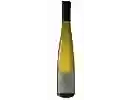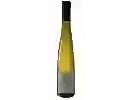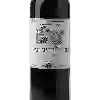
Clos RousselyLe Clos Sauvignon
This wine generally goes well with vegetarian, rich fish (salmon, tuna etc) or shellfish.
Wine flavors and olphactive analysis
On the nose the Le Clos Sauvignon of Clos Roussely in the region of Loire Valley often reveals types of flavors of grapefruit, apples or peach and sometimes also flavors of minerality, melon or passion fruit.
Food and wine pairings with Le Clos Sauvignon
Pairings that work perfectly with Le Clos Sauvignon
Original food and wine pairings with Le Clos Sauvignon
The Le Clos Sauvignon of Clos Roussely matches generally quite well with dishes of rich fish (salmon, tuna etc), shellfish or vegetarian such as recipes of baked salmon mediterranean style, cuttlefish in parsley sauce or vegan leek and tofu quiche.
Details and technical informations about Clos Roussely's Le Clos Sauvignon.
Discover the grape variety: Isa
Crossing obtained in 1964 between the gloria hungariae or glory of Hungary (Hungarian millennium X muscatel Thalloczy Lajos) by the cardinal. The Isa is registered since 1996 in the Official Catalogue of table grape varieties list A1.
Last vintages of this wine
The best vintages of Le Clos Sauvignon from Clos Roussely are 2014, 2015, 2018, 2017 and 2016.
Informations about the Clos Roussely
The Clos Roussely is one of of the world's greatest estates. It offers 20 wines for sale in the of Touraine to come and discover on site or to buy online.
The wine region of Touraine
The wine region of Touraine is located in the region of Centre Loire of Loire Valley of France. Wineries and vineyards like the Domaine Famille Bougrier or the Domaine Joel Delaunay produce mainly wines white, red and sparkling. The most planted grape varieties in the region of Touraine are Cabernet franc, Gamay noir and Chenin blanc, they are then used in wines in blends or as a single variety. On the nose of Touraine often reveals types of flavors of grapefruit, tar or kiwi and sometimes also flavors of lime zest, lychee or asparagus.
The wine region of Loire Valley
The Loire Valley is a key wine region in western France. It follows the course of the Loire River on its Long journey through the heart of France, from the inland hills of the Auvergne to the plains of the French Atlantic coast near Nantes (Muscadet country). Important in terms of quantity and quality, the region produces large quantities (about 4 million h/l each year) of everyday wines, as well as some of France's greatest wines. Diversity is another of the region's major assets; the styles of wine produced here range from the light, tangy Muscadet to the Sweet, honeyed Bonnezeaux, the Sparkling whites of Vouvray and the juicy, Tannic reds of Chinon and Saumur.
The word of the wine: Braucol
See servadou iron.














